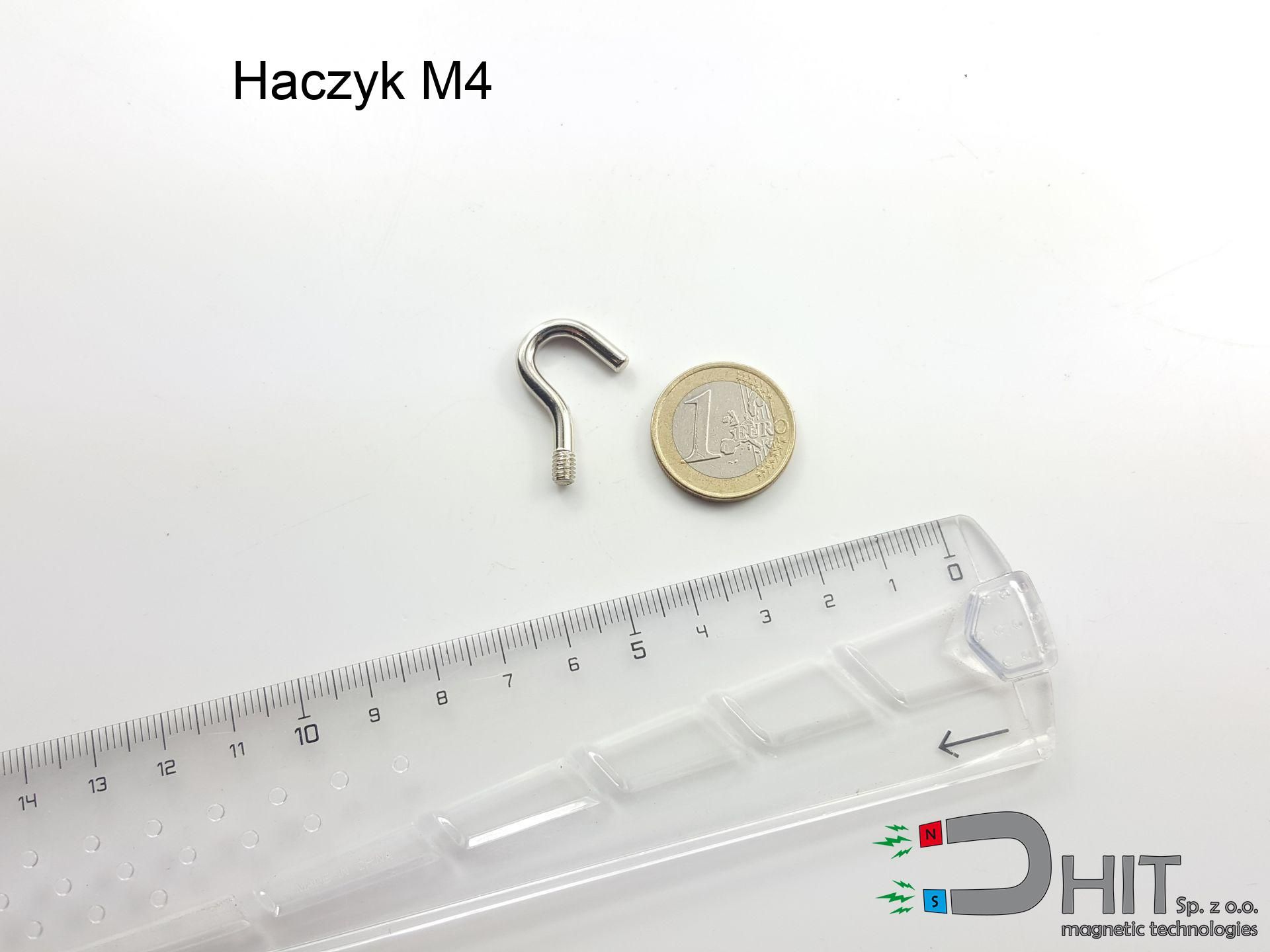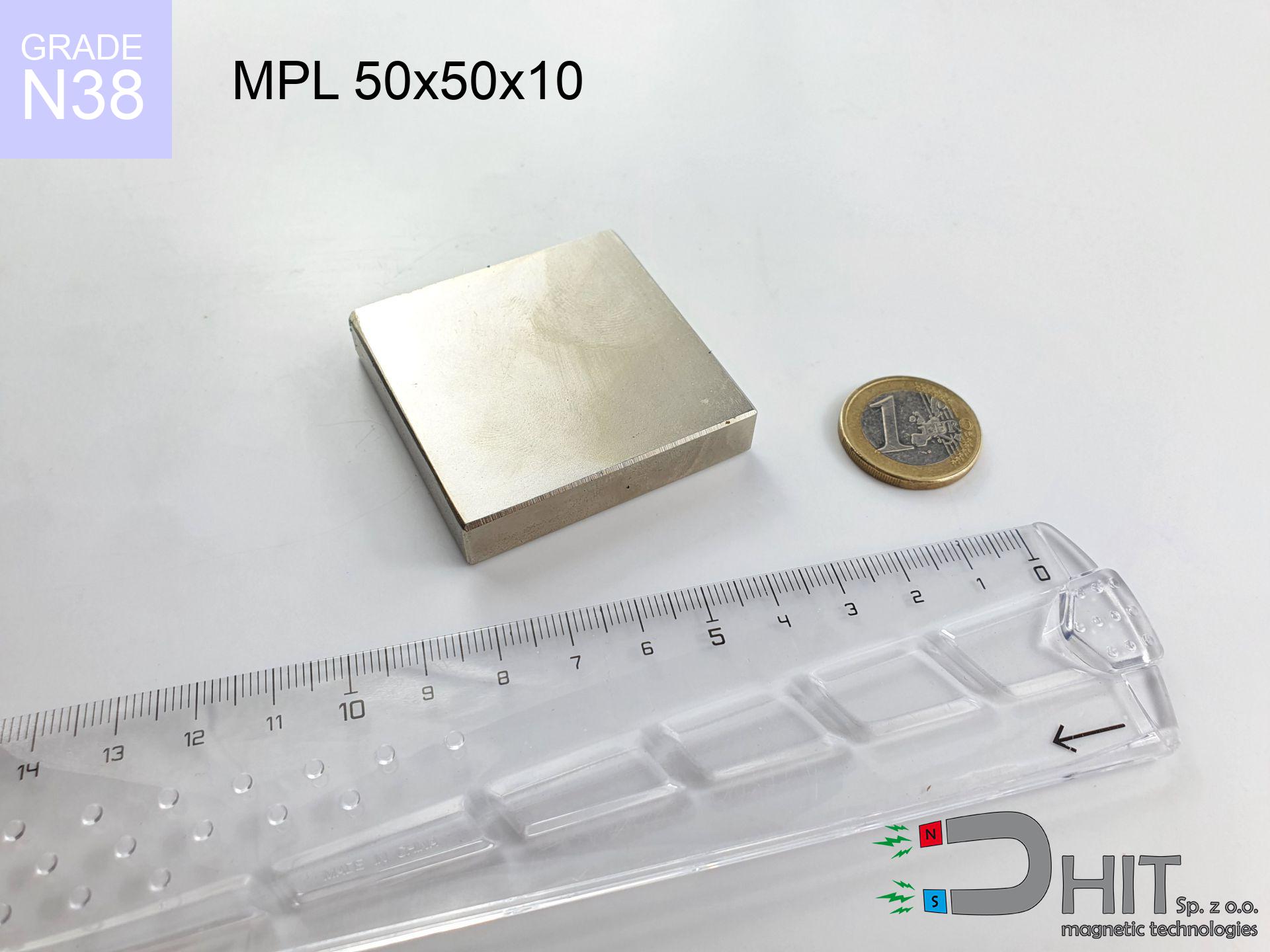AM Haczyk M4 - magnetic accessories
magnetic accessories
Catalog no 080505
Coating
[NiCuNi] Nickel
1.230 ZŁ with VAT / pcs + price for transport
1.000 ZŁ net + 23% VAT / pcs
bulk discounts:
Need more?
Call us
+48 888 99 98 98
alternatively drop us a message using
our online form
the contact page.
Lifting power as well as form of a magnet can be reviewed with our
modular calculator.
Same-day shipping for orders placed before 14:00.
Detailed specification - AM Haczyk M4 - magnetic accessories
Specification / characteristics - AM Haczyk M4 - magnetic accessories
| properties | values |
|---|---|
| Cat. no. | 080505 |
| Production/Distribution | Dhit sp. z o.o. |
| Country of origin | Poland / China / Germany |
| Customs code | 85059029 |
| Coating | [NiCuNi] Nickel |
| Manufacturing Tolerance | ±1 mm |
Physical properties of sintered neodymium magnets Nd2Fe14B at 20°C
| properties | values | units |
|---|---|---|
| Vickers hardness | ≥550 | Hv |
| Density | ≥7.4 | g/cm3 |
| Curie Temperature TC | 312 - 380 | °C |
| Curie Temperature TF | 593 - 716 | °F |
| Specific resistance | 150 | μΩ⋅cm |
| Bending strength | 250 | MPa |
| Compressive strength | 1000~1100 | MPa |
| Thermal expansion parallel (∥) to orientation (M) | (3-4) x 10-6 | °C-1 |
| Thermal expansion perpendicular (⊥) to orientation (M) | -(1-3) x 10-6 | °C-1 |
| Young's modulus | 1.7 x 104 | kg/mm² |
Elemental analysis
| iron (Fe) | 64% – 68% |
| neodymium (Nd) | 29% – 32% |
| boron (B) | 1.1% – 1.2% |
| dysprosium (Dy) | 0.5% – 2.0% |
| coating (Ni-Cu-Ni) | < 0.05% |
Sustainability
| recyclability (EoL) | 100% |
| recycled raw materials | ~10% (pre-cons) |
| carbon footprint | low / zredukowany |
| waste code (EWC) | 16 02 16 |
Other offers
Advantages and disadvantages of neodymium magnets.
Benefits
- They do not lose magnetism, even over around ten years – the drop in strength is only ~1% (according to tests),
- They maintain their magnetic properties even under strong external field,
- Thanks to the glossy finish, the layer of nickel, gold, or silver gives an elegant appearance,
- Magnetic induction on the top side of the magnet turns out to be exceptional,
- Neodymium magnets are characterized by extremely high magnetic induction on the magnet surface and can function (depending on the form) even at a temperature of 230°C or more...
- Thanks to the potential of flexible shaping and customization to custom solutions, neodymium magnets can be produced in a variety of shapes and sizes, which makes them more universal,
- Versatile presence in modern industrial fields – they are used in magnetic memories, electric drive systems, diagnostic systems, and multitasking production systems.
- Thanks to their power density, small magnets offer high operating force, occupying minimum space,
Disadvantages
- At very strong impacts they can break, therefore we advise placing them in strong housings. A metal housing provides additional protection against damage and increases the magnet's durability.
- Neodymium magnets lose their force under the influence of heating. As soon as 80°C is exceeded, many of them start losing their power. Therefore, we recommend our special magnets marked [AH], which maintain durability even at temperatures up to 230°C
- When exposed to humidity, magnets start to rust. To use them in conditions outside, it is recommended to use protective magnets, such as magnets in rubber or plastics, which secure oxidation as well as corrosion.
- Due to limitations in producing threads and complicated shapes in magnets, we recommend using a housing - magnetic mount.
- Potential hazard related to microscopic parts of magnets can be dangerous, in case of ingestion, which gains importance in the context of child safety. Additionally, small components of these devices can complicate diagnosis medical when they are in the body.
- High unit price – neodymium magnets are more expensive than other types of magnets (e.g. ferrite), which hinders application in large quantities
Lifting parameters
Maximum lifting force for a neodymium magnet – what it depends on?
- using a sheet made of low-carbon steel, functioning as a ideal flux conductor
- with a cross-section no less than 10 mm
- characterized by even structure
- without the slightest air gap between the magnet and steel
- for force applied at a right angle (in the magnet axis)
- in stable room temperature
What influences lifting capacity in practice
- Distance (between the magnet and the plate), because even a very small clearance (e.g. 0.5 mm) can cause a drastic drop in lifting capacity by up to 50% (this also applies to paint, rust or dirt).
- Force direction – remember that the magnet has greatest strength perpendicularly. Under sliding down, the capacity drops significantly, often to levels of 20-30% of the nominal value.
- Wall thickness – thin material does not allow full use of the magnet. Magnetic flux passes through the material instead of converting into lifting capacity.
- Steel type – low-carbon steel gives the best results. Higher carbon content lower magnetic properties and holding force.
- Surface quality – the smoother and more polished the plate, the better the adhesion and stronger the hold. Roughness creates an air distance.
- Thermal factor – high temperature reduces pulling force. Too high temperature can permanently demagnetize the magnet.
Lifting capacity was determined with the use of a smooth steel plate of suitable thickness (min. 20 mm), under perpendicular detachment force, however under attempts to slide the magnet the lifting capacity is smaller. Moreover, even a slight gap between the magnet’s surface and the plate lowers the holding force.
Safety rules for work with neodymium magnets
Protect data
Device Safety: Strong magnets can damage payment cards and sensitive devices (pacemakers, hearing aids, mechanical watches).
Maximum temperature
Control the heat. Exposing the magnet to high heat will permanently weaken its magnetic structure and pulling force.
Mechanical processing
Powder produced during machining of magnets is self-igniting. Avoid drilling into magnets without proper cooling and knowledge.
Adults only
Adult use only. Tiny parts pose a choking risk, leading to severe trauma. Store out of reach of kids and pets.
Phone sensors
Remember: neodymium magnets produce a field that interferes with sensitive sensors. Maintain a separation from your phone, device, and navigation systems.
Skin irritation risks
It is widely known that the nickel plating (standard magnet coating) is a potent allergen. If you have an allergy, avoid direct skin contact or select encased magnets.
Protective goggles
Despite the nickel coating, the material is brittle and cannot withstand shocks. Do not hit, as the magnet may shatter into sharp, dangerous pieces.
Crushing risk
Protect your hands. Two powerful magnets will join instantly with a force of massive weight, destroying anything in their path. Be careful!
Life threat
Individuals with a heart stimulator must keep an absolute distance from magnets. The magnetism can disrupt the functioning of the implant.
Immense force
Be careful. Neodymium magnets act from a distance and snap with huge force, often faster than you can react.





![SM 32x400 [2xM8] / N42 - magnetic separator SM 32x400 [2xM8] / N42 - magnetic separator](https://cdn3.dhit.pl/graphics/products/sm-32x400-2xm8-tep.jpg)


